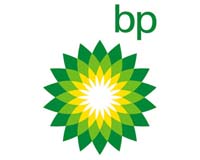 |
Grand Isle, Louisiana (AFP) June 6, 2010 BP said Sunday it was capturing some 10,000 barrels of crude a day from the ruptured Gulf of Mexico well, raising hopes it could be containing most of the worst oil spill in US history. With an environmental catastrophe unfolding on the shores of Louisiana and fears for neighboring southern states, BP chief's executive Tony Hayward said a cap fitted on the leaking pipe a mile (1,600 meters) down on the sea bed appeared to be working. "As we speak, the containment cap is producing around 10,000 barrels of oil a day to the surface," he told the BBC. The US official in charge of the government operation, Admiral Thad Allen, agreed with the estimate, but refused to be drawn on what percentage of the leaking oil it represented. Government scientists have estimated that up to 19,000 barrels a day could be spewing into the Gulf since the April 20 explosion sank the BP-leased Deepwater Horizon rig just off the Louisiana coast. "We're not going to know how much oil is coming out until we're able to optimize the production, and that's what they're doing right now," Allen told ABC News "This Week." "They are slowly raising production. It was 6,000 a day before and it was 10,000 yesterday," he added, also speaking of the anguish being felt by everyone involved in the momentous operation to stop the disaster. "I think everybody is anguished over this. You know, I've been working on the water for 39 years. This is just completely distressing, and it's very frustrating," he told CNN. He warned that the Coast Guard and clean-up teams were fighting an "insidious enemy" as they battle to keep the oil from reaching the shores, amid fears Florida's beaches could be badly hit with tar balls already washing up in Mississippi and Alabama. The slick has now spread around a 200-mile (320-kilometer) radius from the fractured wellhead, but has broken into thousands of small spills, Allen explained on ABC. "This spill is just aggregated over a 200-mile radius around the wellbore, where it's leaking right now, and it's not a monolithic spill. It is literally hundreds of thousands of smaller spills." Ghastly pictures of birds smothered in thick layers of oil have shown the impact of the disaster, amid warnings the situation is getting progressively worse, with millions of gallons of crude now sloshing around in the sea. Massive spreads of boom have been deployed to protect coastlines, with Canada sending another 3,000 meters to the United States on Sunday, but in many places it has proved ineffective. Around 660 kilometers (410 miles) of boom, mostly from private oil company stock, have been deployed to contain the spill in the Gulf of Mexico, according to the most recent US government figures. As of Saturday, 57 "visibly oiled" birds have been found dead, and another 156 oiled birds have been discovered alive, according to figures from the government and boatmen, biologists and rescuers at Grand Isle on Saturday. Among them are the brown pelican -- the Louisiana state symbol, which was only removed from the endangered list in November. Bradley Verdin, a local boatman who carried journalists out to the badly-affected Queen Bess rookery, said the situation worsened about three days ago. "I'm glad they are trying to save these birds," he said. "I didn't think it was that bad until the day before yesterday." Allen warned Sunday that regardless of how much oil is now being contained, the leak will not be completely stopped until BP completes the drilling of two relief wells, sometime in August. "There will be oil out there for months to come," he told CBS television. "This spill is keeping everybody hostage." The latest containment effort involves a cap placed over a sawn-off pipe, which gathers the oil, allowing it to be siphoned up to a container ship. It was the first maneuver to demonstrate some success at curbing the amount of oil spewing into the Gulf, after a series of embarrassing failures. BP said Sunday it was readying a second containment effort, involving feeding pipes into the leaking blow-out preventer (BOP) that could siphon up additional oil to another container ship. The bid will use much of the same equipment deployed during BP's failed effort to flood the BOP with heavy drilling fluid called "mud." Pipes will "be attached to what's called the choke and kill lines and instead of pushing mud in we'll be pulling oil out," BP spokesman Mark Proegler told AFP. Hayward said the system could be ready by next week and, despite criticisms of his handling of the disaster, said he had the "absolute intention of seeing this through to the end."
Share This Article With Planet Earth
Related Links Powering The World in the 21st Century at Energy-Daily.com
 Obama fires warning over BP share dividend
Obama fires warning over BP share dividendKenner, Louisiana (AFP) June 4, 2010 President Barack Obama fired a seething warning to BP Friday, warning the oil giant must not go cheap on Gulf of Mexico disaster victims if it pays billions of dollars in share dividends. Obama, who has been criticized for not showing enough emotion over the worst environmental disaster in US history, showed flashes of obvious anger as he hammered BP, which operated the Deepwater Horizon rig ... read more |
|
| The content herein, unless otherwise known to be public domain, are Copyright 1995-2010 - SpaceDaily. AFP and UPI Wire Stories are copyright Agence France-Presse and United Press International. ESA Portal Reports are copyright European Space Agency. All NASA sourced material is public domain. Additional copyrights may apply in whole or part to other bona fide parties. Advertising does not imply endorsement,agreement or approval of any opinions, statements or information provided by SpaceDaily on any Web page published or hosted by SpaceDaily. Privacy Statement |